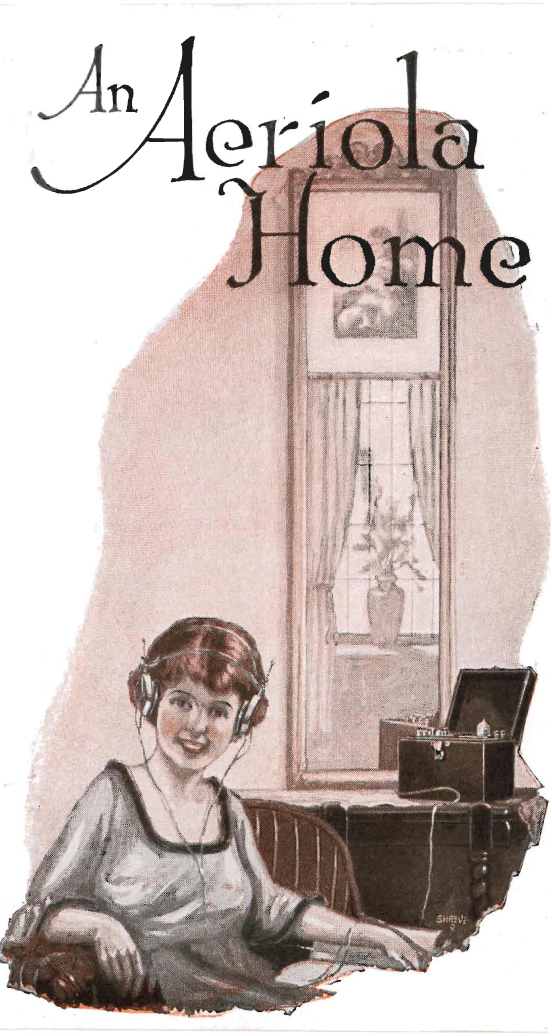 Westinghouse Electric is largely forgotten today; if they are remembered, it's still for major appliances from the 1950s and Betty Furness commercials. But they have quite a corporate history as a major competitor to General Electric, in both industry and consumer products. And they were pioneer in radio.
Westinghouse Electric is largely forgotten today; if they are remembered, it's still for major appliances from the 1950s and Betty Furness commercials. But they have quite a corporate history as a major competitor to General Electric, in both industry and consumer products. And they were pioneer in radio.
Not too long after WWI, General Electric, AT&T (more commonly known at the time as Bell Telephone, and their subsidiary Western Electric) and Westinghouse created a radio patent pool with cross-licensing rights; the pool was controlled by a brand new company, the Radio Corporation of America, more commonly known as RCA.
Westinghouse had already developed and were selling a few radio units when they inked a deal to have RCA take over distribution of their radios. The first two were Westinghouse's Aeriola Junior and Senior.
The radios look very similar on the outside, but the Junior was a crystal set (no tubes, and no electricity requirements). The Senior came out in December 1921, and was a one-tube regenerative set; it ran on a Westinghouse WD-11 tube ($8 new, in 1922), and needed batteries to provide the electricity to power it; one 1-½V and one 22-½V. And you needed high-impedance headphones to listen to it, or buy the accessory power amplier (sold a year later).
These radios had an instruction card inside the lid; they're usually long gone by now, as is mine. Radioguy (see source below) sells replacements, albiet they're pricey.
The early units sold by Westinghouse just say Westinghouse on them. When RCA began distributing them, the cards were co-branded with Westinghouse on top and RCA on the bottom. A couple years later, RCA changed the name to "Radiola" and changed the card to a little name plaque.
This is a Westinghouse model, and there are two versions. Changes were small, but enough that you can quickly tell the difference between them. The Early version have a black-painted wood panel and a metal ring where the tube sits. The later version (I assume it's the co-branded RCA) has a bakelite panel and a black ring. Mine's the earlier version.
The WD-11 tube goes into a socket below, but sticks up above the panel so you can see that it's glowing. Radiolaguy says that there are two WD-11 tube sizes, an earlier taller one and a later shorter one. The earlier Aeriola Sr. needs the taller WD-11, and the later Aeriola needs the shorter version. If you swap them, the short WD-11 is difficult to extract on the early set, and tall WD-11 sticks up too high for the later set's lid to close.
A friend of mine found one of these and I've been jealous ever since. This is the second one I've personally come across. It was an online auction; I bid on it just to keep it from going cheap, and then was surprised to find that I'd won.
So for once, this sort of thing really paid off. The original photo made it look as if the tube were missing. When I got it, the box rattled and I thought, oh no, this thing got smashed in-transit like my Stromberg. But I opened it up to find the box was intact, and the controls were okay. I unscrewed the faceplate and lifted it up. The chassis is mounted underneath. You can click on each photo to see a larger version.
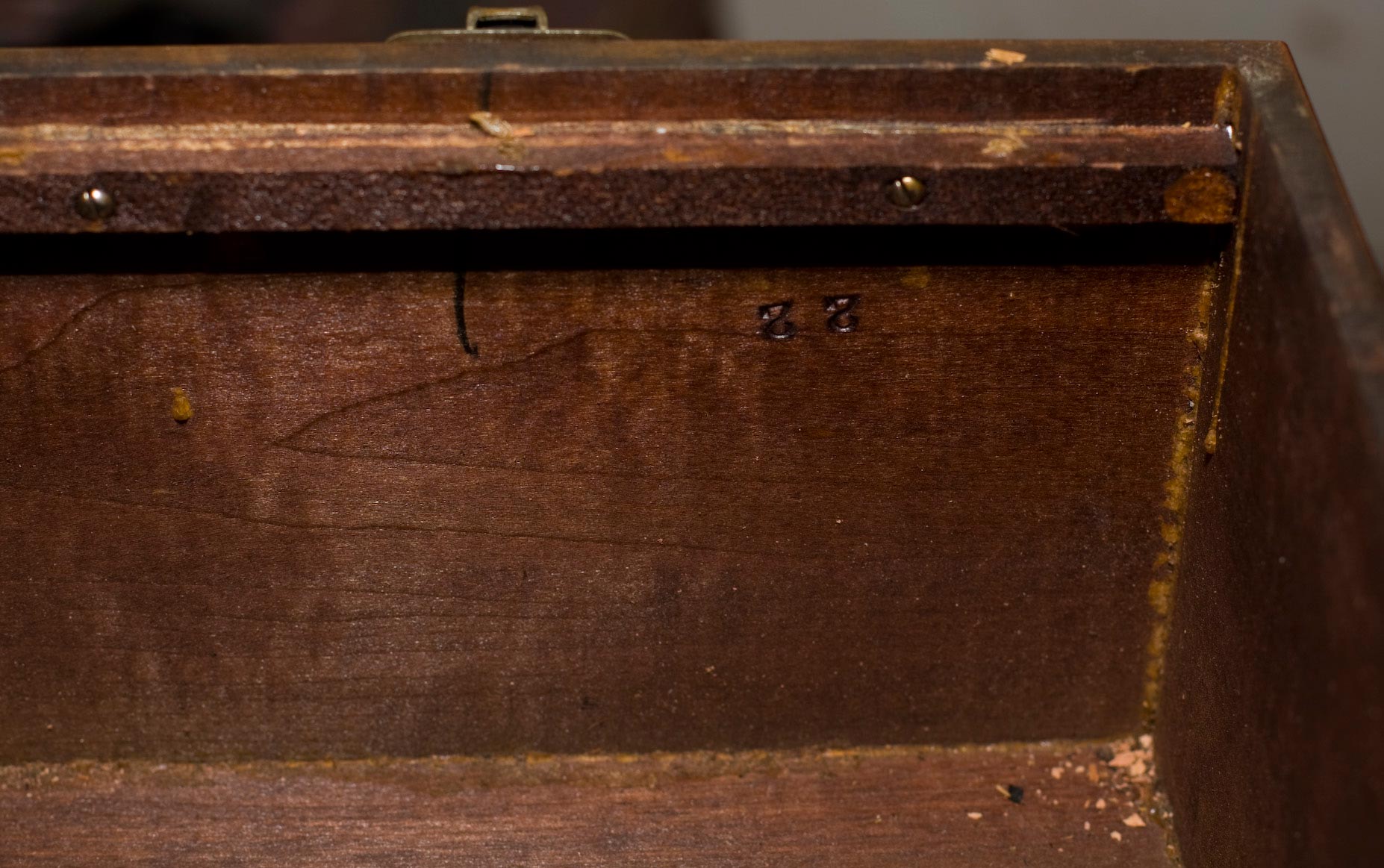 Another interesting thing is that there's a stamp inside the cabinet that says "22". At first I wasn't sure what it was; it seemed too short for a serial number; could be an inspector's acceptance stamp; and someone on a radio group speculated that it was vendor code number. I dont' know this for a certain fact, but I believe it's the year of manufacture, which would make sense. These radios were announced in December 1921 and were built at least through 1923 before RCA renamed it the Radiola Senior, and I don't know how much longer it ran after that.
Another interesting thing is that there's a stamp inside the cabinet that says "22". At first I wasn't sure what it was; it seemed too short for a serial number; could be an inspector's acceptance stamp; and someone on a radio group speculated that it was vendor code number. I dont' know this for a certain fact, but I believe it's the year of manufacture, which would make sense. These radios were announced in December 1921 and were built at least through 1923 before RCA renamed it the Radiola Senior, and I don't know how much longer it ran after that.
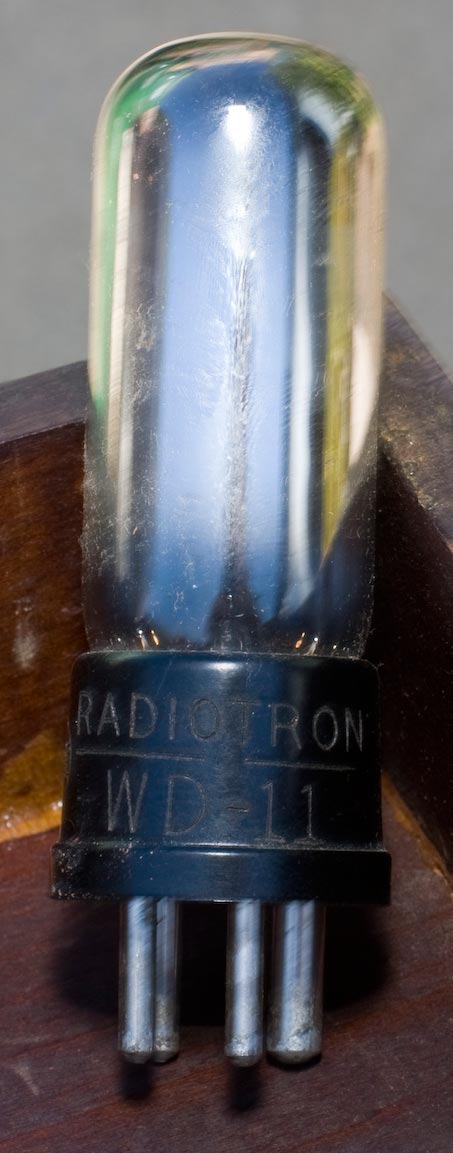 The tube is actually housed in a wooden box that's mounted to the underside of the face. The box is mounted by four screws from the face front. I backed the screws out, carefully put the box into position, and ran the screws back down. It's holding nicely. I thought I might add a dab of wood glue to help, but so far it's okay as long you leave it alone.
The tube is actually housed in a wooden box that's mounted to the underside of the face. The box is mounted by four screws from the face front. I backed the screws out, carefully put the box into position, and ran the screws back down. It's holding nicely. I thought I might add a dab of wood glue to help, but so far it's okay as long you leave it alone.
The tube is the infamous WD-11. I thought for sure it was long gone, but it was actually in its box, which was swimming around underneath the cabinet face and not visible. This turns out to be an RCA Radiotron version with the T-8 cylinder glass envelope, and I believe it's shorter than the original. It's also silvered inside from manufacture, where they try to get rid of the last of the impurities inside the tube. My guess is this is a replacement from the early 1930s (somewhere in the 1930s, RCA simply called them 11s). Earlier tubes, both Westinghouse and RCA branded, had a brass base, was not silvered inside, and it had the ice-cream-cone tip on the glass.
There were two reasons the tube was accessible from the top of the radio. The first was that their lives weren't very long and this makes it easy to replace them. There's an issue of Radio News (I don't recall which offhand—an issue from 1922 or 23) where a reader complained about going through five of these in one year. WD-11s were running around $7 each at the time, which makes them very expensive even then. (The magazine editor replied the short life he was getting was abnormal. See below.)
The other reason was that you were supposed to look at the filament glow to determine how much battery current to give it, and you need to be able to see the tube to do it. The instructions are to run it at a dull, red glow. The tube will perform better if it's brighter, but it won't last as long. That's true of nearly all tubes: there's a trade-off between performance and lifespan. So on these WD-11s, you want to err on the gentle side and give them just enough juice to run effectively.
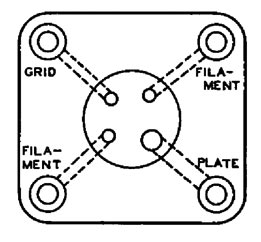 I doubt very much I'll be able to see the filament through the silvering on the top of the tube; so I'll either have to start with the lowest setting on the rheostat and try to walk it up to the minimum needed to perform, or I'll put a milliameter between the battery and the box and keep an eye on the current that way. The tube's max current rating is 250 mA.
I doubt very much I'll be able to see the filament through the silvering on the top of the tube; so I'll either have to start with the lowest setting on the rheostat and try to walk it up to the minimum needed to perform, or I'll put a milliameter between the battery and the box and keep an eye on the current that way. The tube's max current rating is 250 mA.
WD-11s are currently running around $100 for a working version; I don't know what a display-only one fetches, but I assume they're not cheap either. I don't yet know if this one works, but now I'll have to find out. Either way, I'm so happy I got one at all, I'm not complaining.
To make this work, I'll have to rig up batteries, a long wire antenna, and a ground. I've got high-Z headphones already, It doesn't have enough power to drive my Magnavox speaker table, unless I want to rig up an audio amplifier in-between. I may be able to patch it into a guitar amp.
Tube compliment: one WD-11 (tube data sheet and another data sheet)
Power: one 1-½V battery for the "A" filament (a modern D-cell would work, but I don't know for how long); one 22-½V battery for the "B" plate amplifier. Two or three 9Vs would do it. The specs for the tube call for 90V typical and 135V max, so 18 to 27V would work fine and would not stress the tube at all.
Source: Radiolaguy sells reproduction lid instruction sheets, albiet they're a bit pricey.
Reference: An Aeriola Sr. brochure
Reference: a "hook-up" (1920s term for schematic diagram) was published in Radio News magazine, April 1923, p. 1819. You can get it from American Radio History.com
Reference: Radiola: The Golden Age of RCA (1919-1929) by Eric P. Wenaas
Reference: Adding two steps to your Aeriola Senior by Jacques H. Herts, from Radio Broadcast magazine, May 1923, pp. 52-54. Adds two stages of AF amplification. Before you get too excited, it calls for two more WD-11 tubes, among sundry hardware and 90VDC to run it.
Current status: Outer cabinet is pretty good. Face is rough. Chassis and components appear complete. Need to check the tube for shorts, hook it all up and try her out.

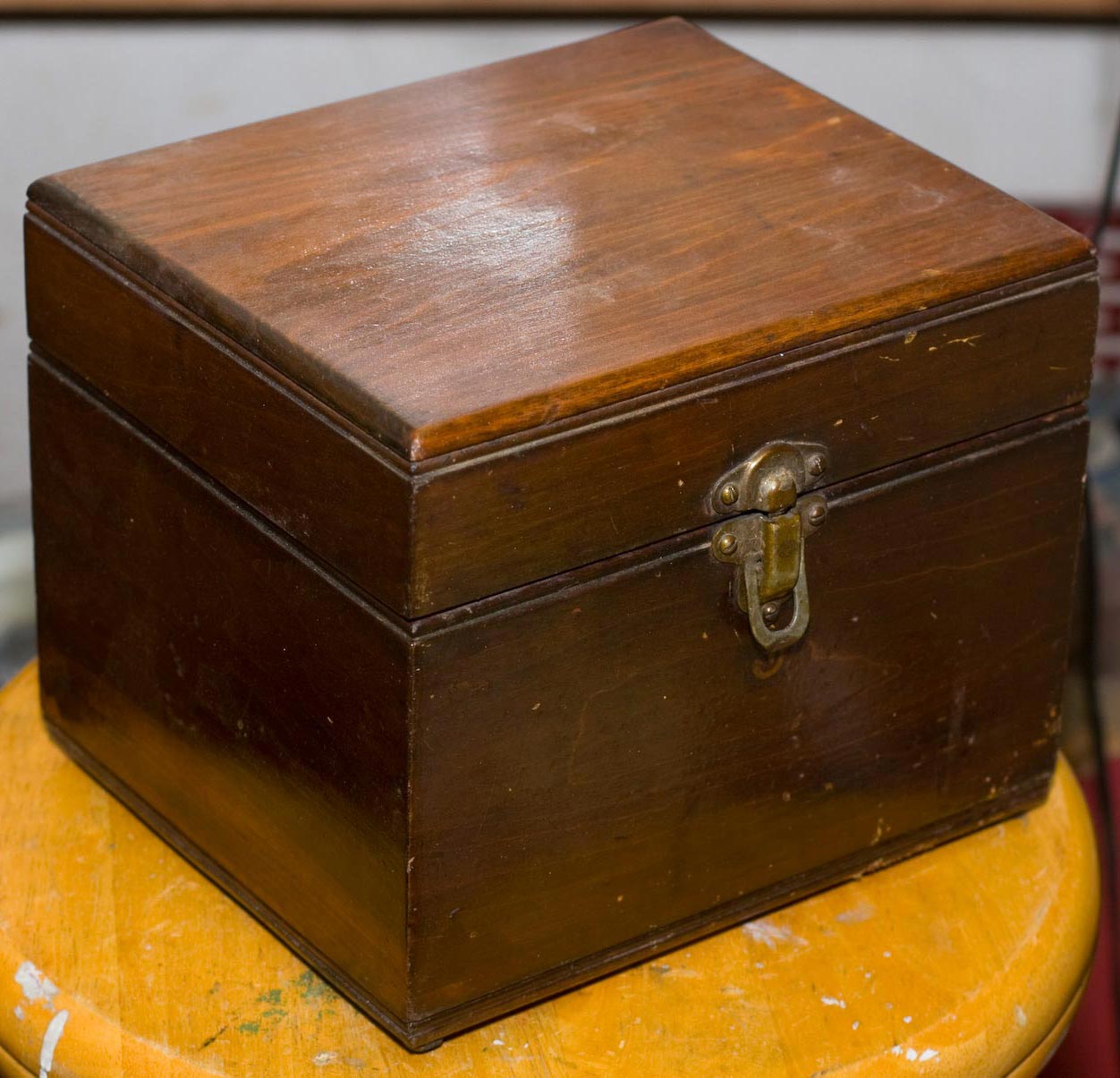
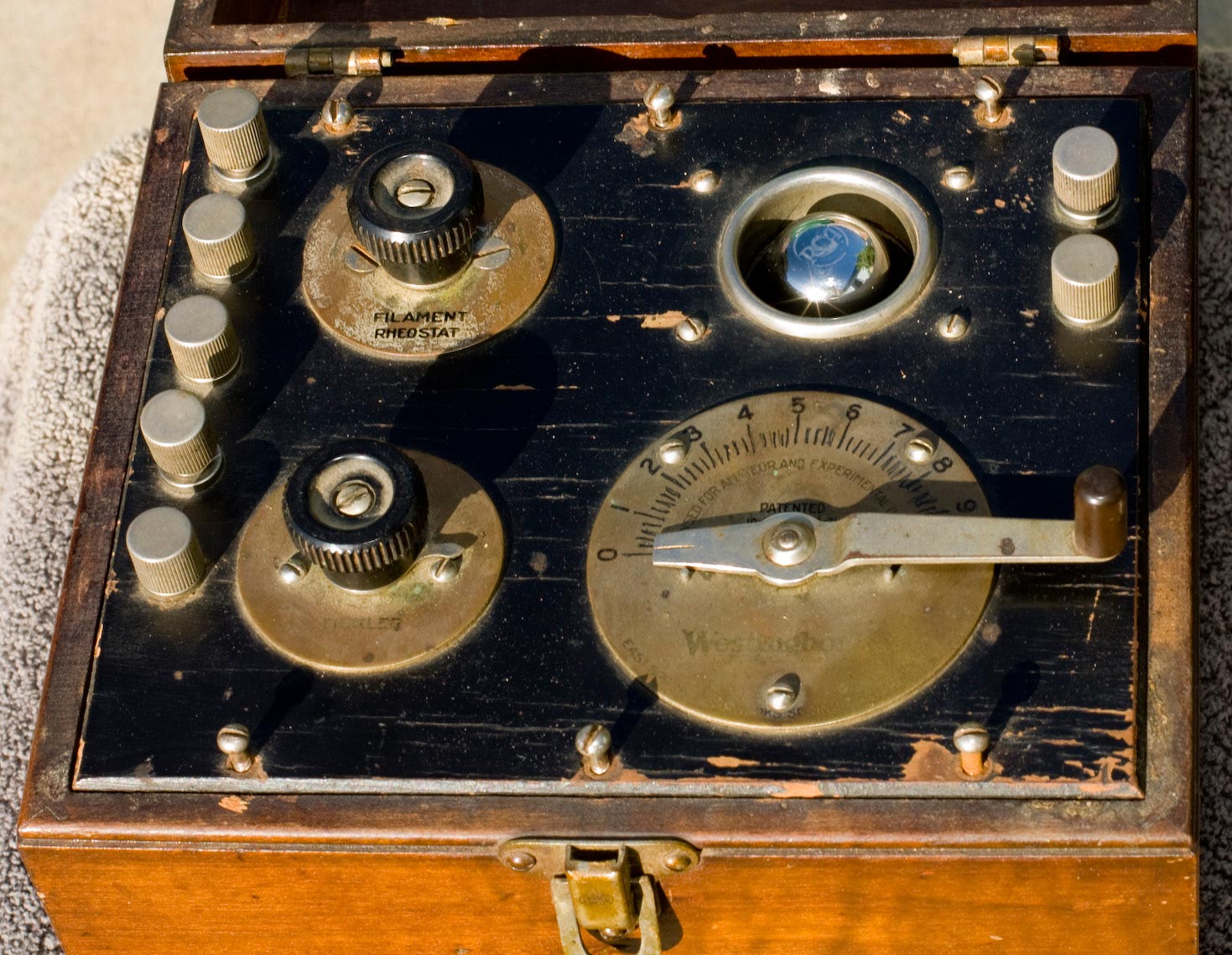
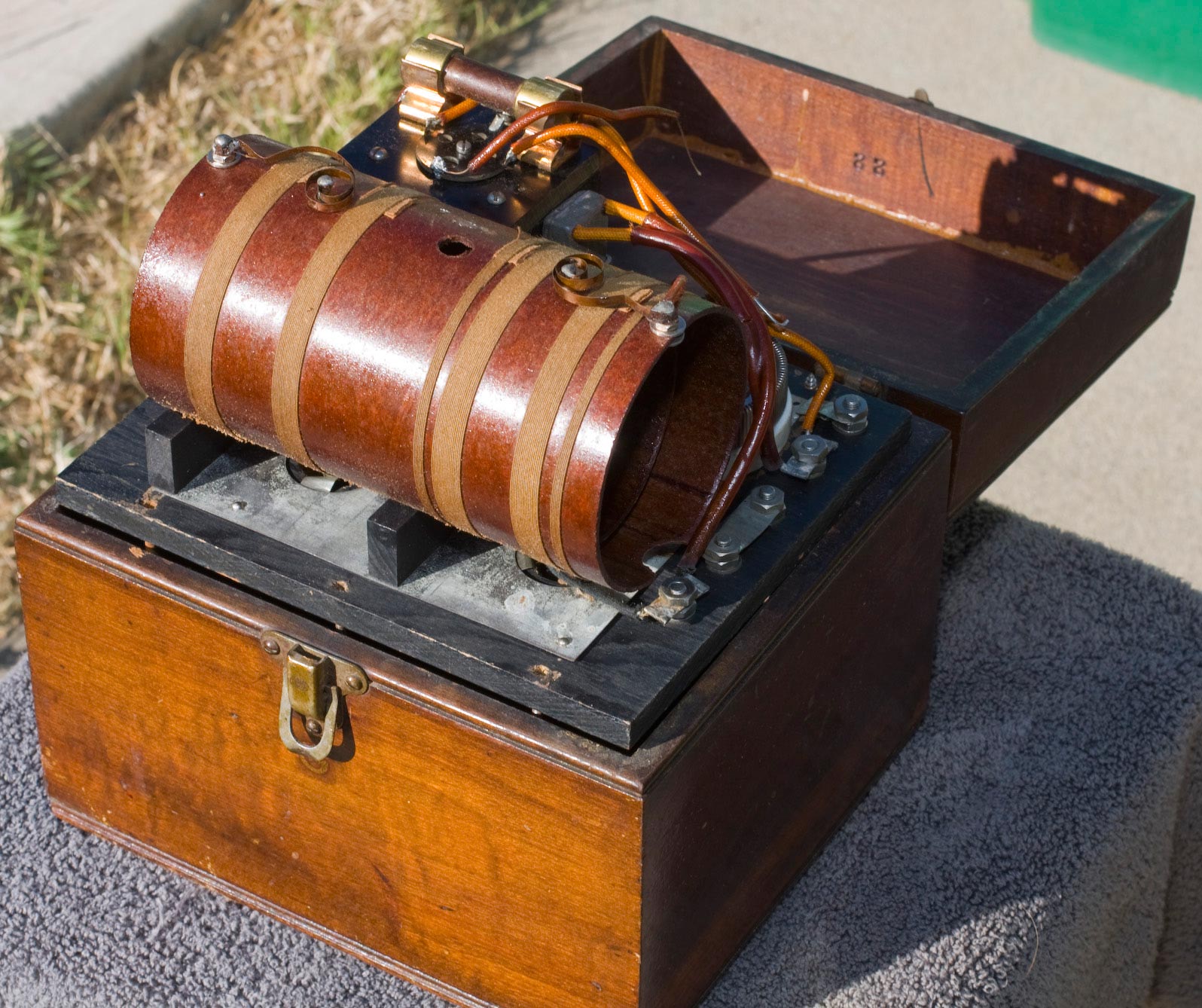
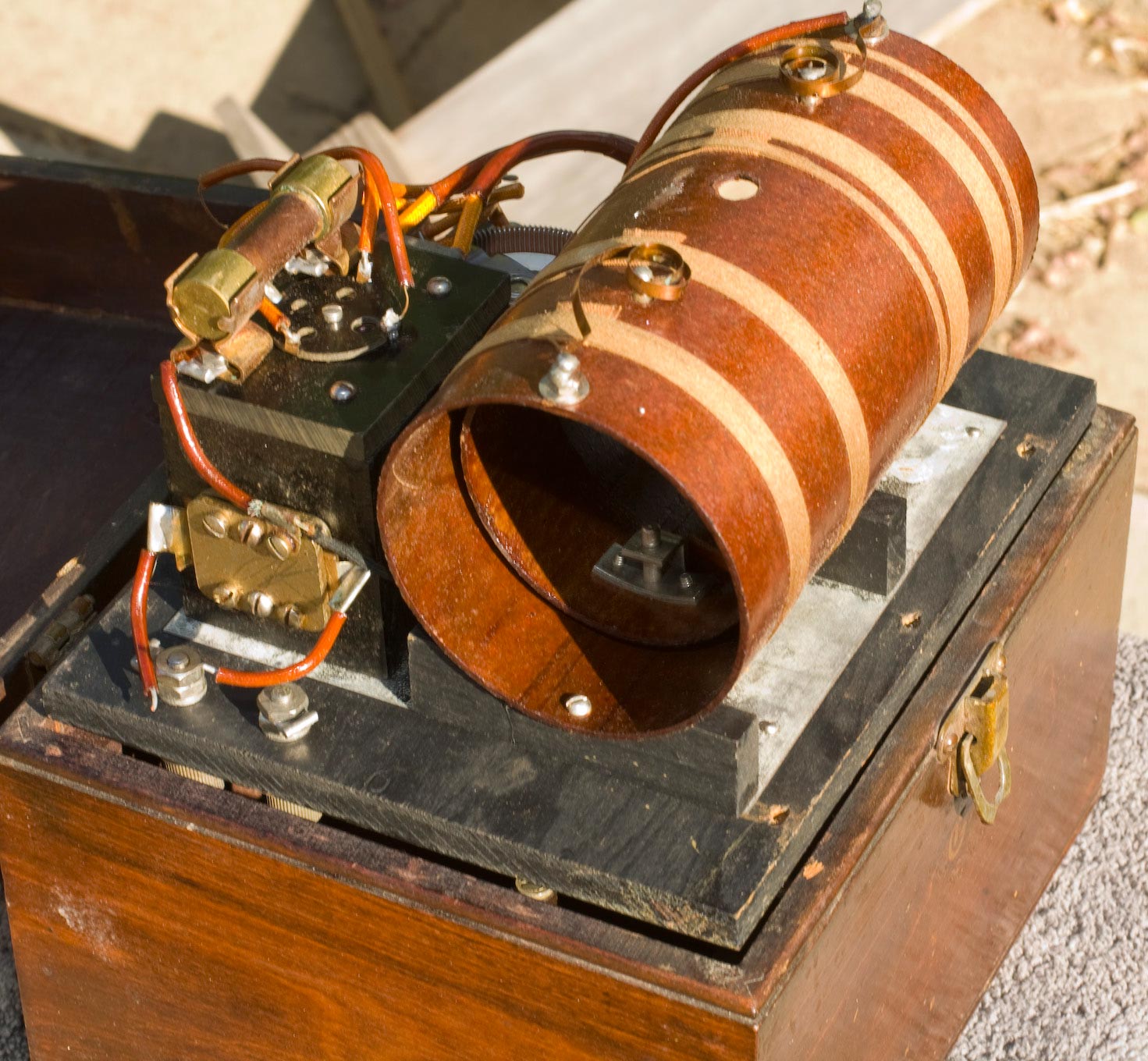
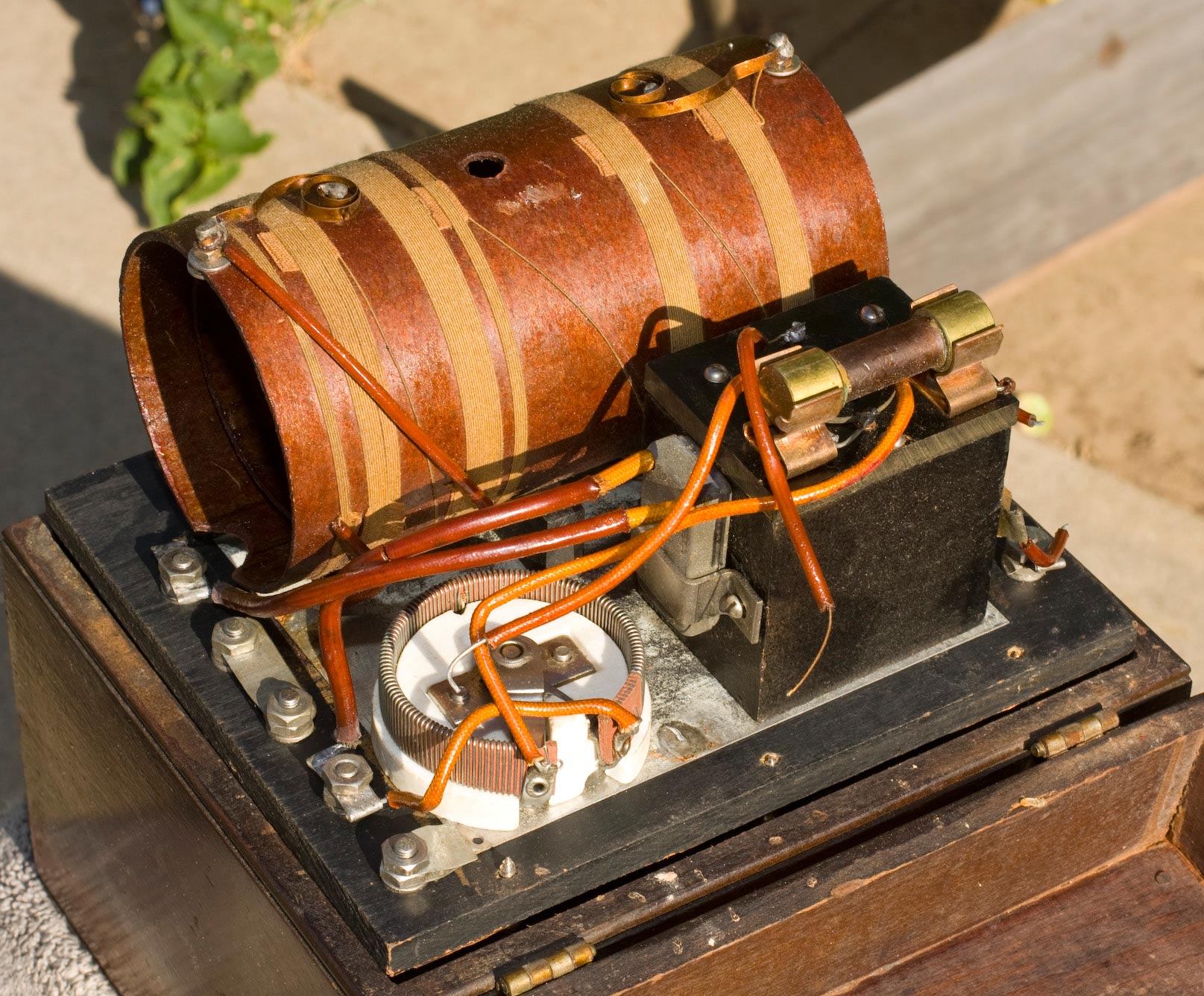
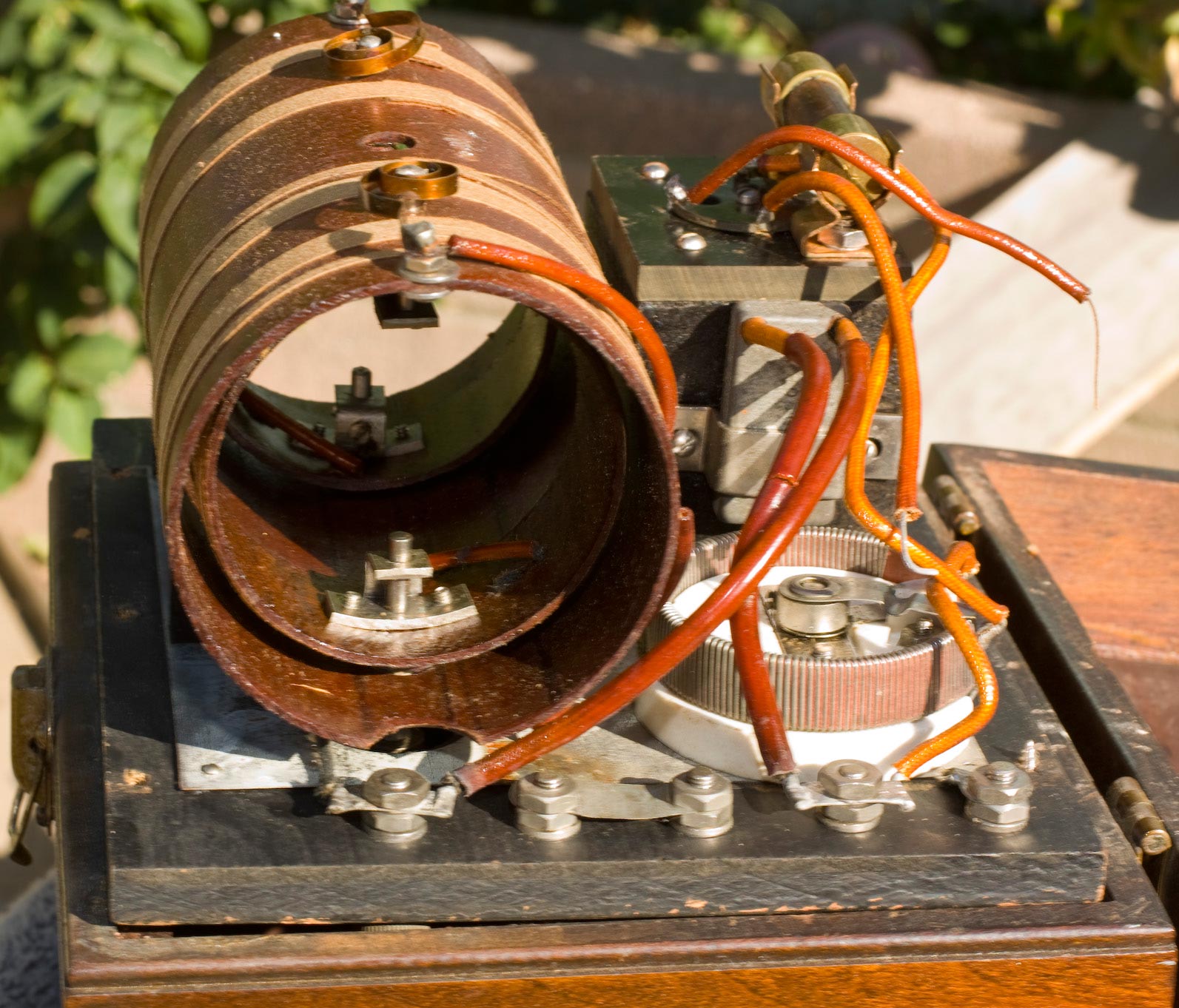
.jpg)